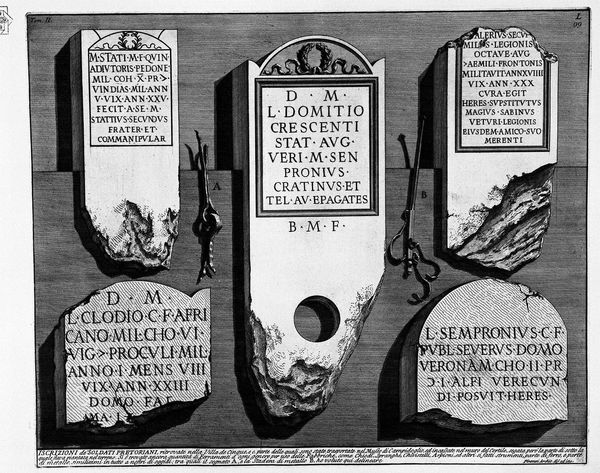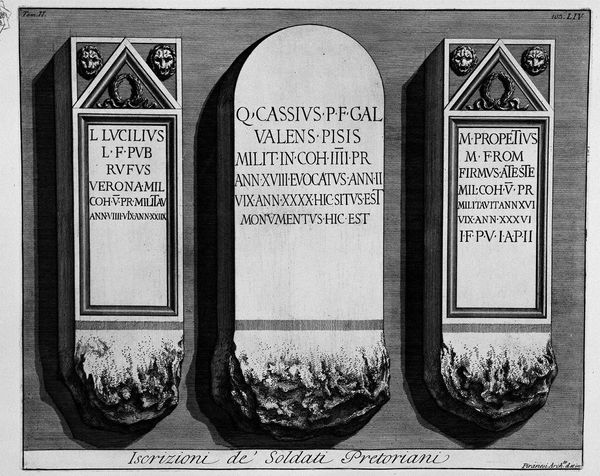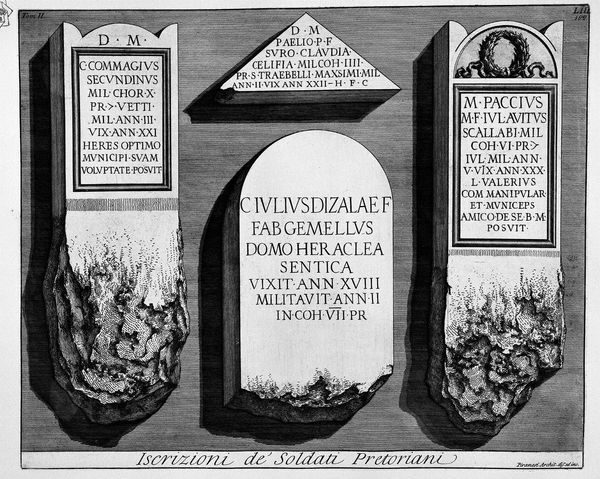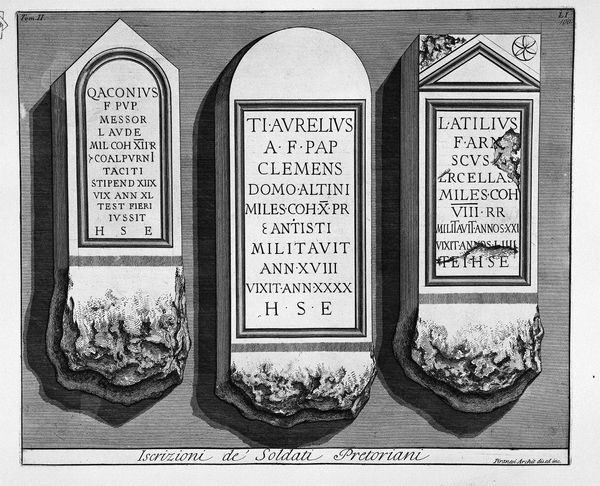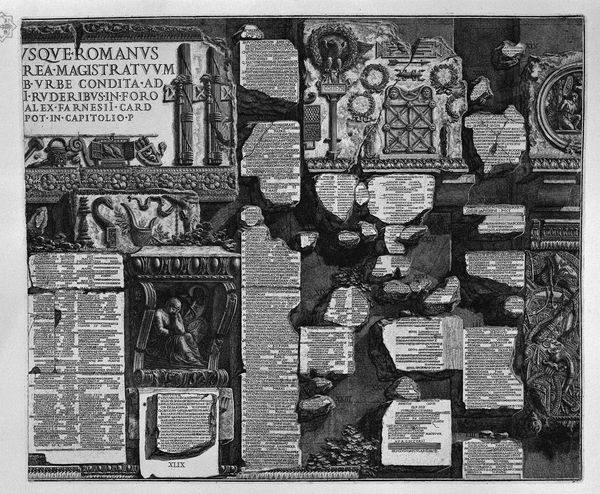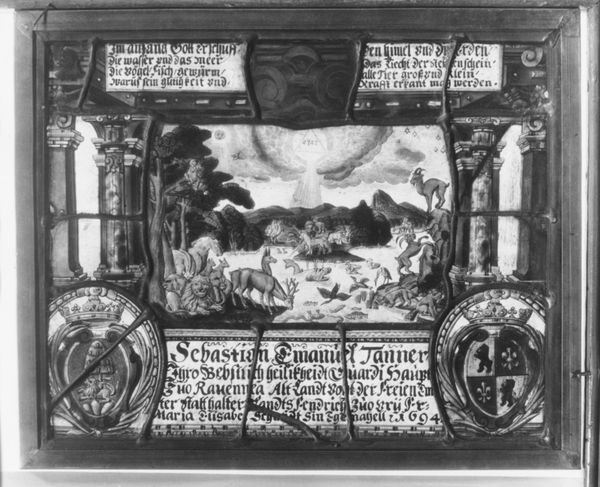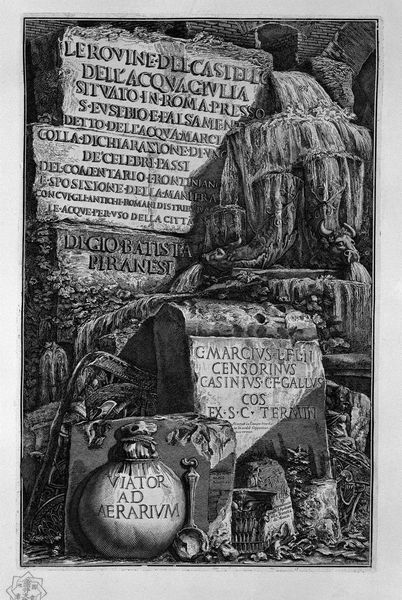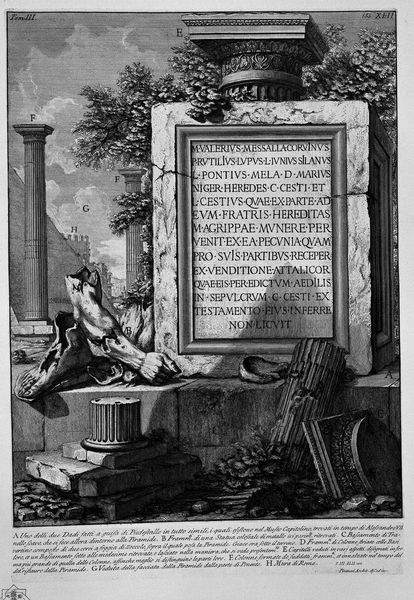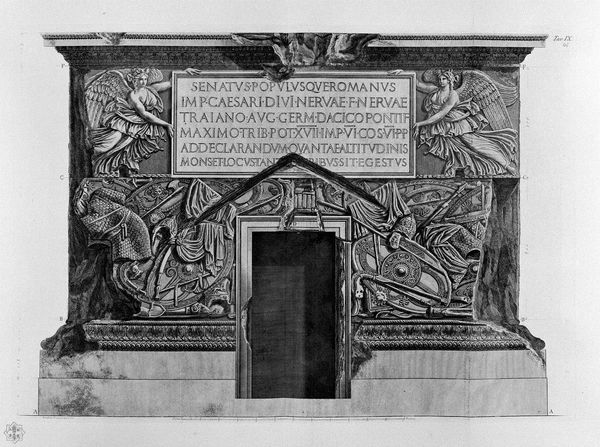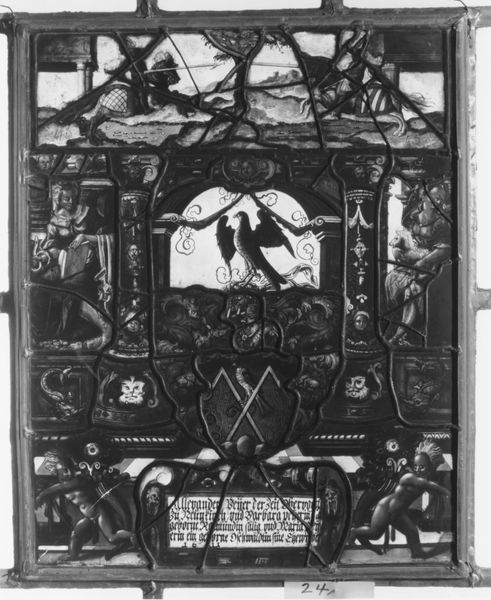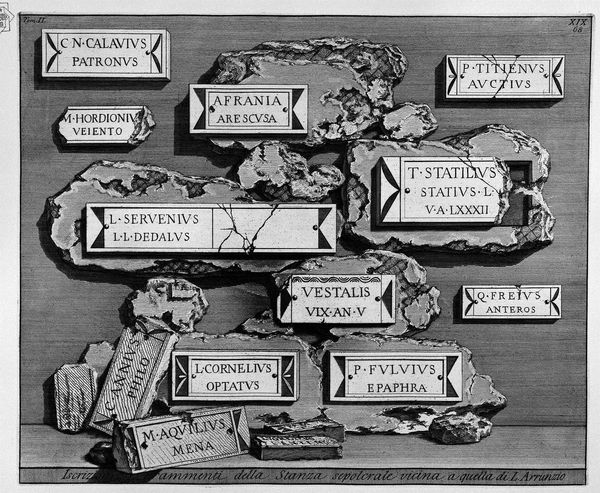
The Roman antiquities, t. 2, Plate LII. Registration of `Soldiers Praetorian guards.
0:00
0:00
drawing, print, engraving
#
drawing
# print
#
complex detailed
#
old engraving style
#
highly detailed
#
geometric
#
arch
#
line
#
history-painting
#
academic-art
#
engraving
#
realism
Copyright: Public domain
Curator: This print, titled "The Roman antiquities, t. 2, Plate LII. Registration of `Soldiers Praetorian guards," is a striking example of Giovanni Battista Piranesi’s work. The primary medium is engraving, allowing for exquisite detail. Editor: My initial response is one of stark monumentality. These forms seem incredibly heavy, each slab of stone asserting its presence through sheer mass and texture. Curator: The composition focuses on inscriptions on grave markers of soldiers in the Praetorian Guard. The emphasis isn’t necessarily on the individuals themselves, but on the text, almost like a typology of epitaphs. Note the variations in letterforms, layout, and damage. Editor: Absolutely. The erosion evident at the base of each marker speaks volumes about time's relentless march and raises questions about the conditions these soldiers may have endured and the class hierarchies within Roman society which allowed their legacies to erode. How were these lives valued or memorialized based on status? Curator: It’s interesting you mention erosion. Piranesi, known for his detailed documentation, captured the physical state of these objects in a quasi-archaeological manner, freezing moments in time. The graphic realism in his treatment, coupled with his use of strong contrast, creates a starkness to which the viewer immediately reacts. Editor: Beyond a mere objective documentation of ancient remains, doesn't the composition point towards a discourse on power and memory? The fragmented and imperfect nature of these markers prompts contemplation of how history is selectively preserved. How much of the original meaning remains and to whom are these fragments still legible? Curator: Your questions about legacy touch upon Piranesi's project. This plate becomes a fragment of an encyclopedia intended to recreate a full picture of the Roman era, though his pictorial method can also lean toward dramatic reinvention. He offers data but stylizes in his interpretations. Editor: Piranesi, the chronicler, but also the architect of his narrative...an editorial hand at work even centuries removed from his subject. Viewing this work as more than an aesthetic representation allows for dialogue about identity, memory, and power that the engravings evoke. Curator: Indeed, what starts as meticulous graphic representation invites a deeper contemplation about both past and present. Editor: A powerful testimony.
Comments
No comments
Be the first to comment and join the conversation on the ultimate creative platform.
